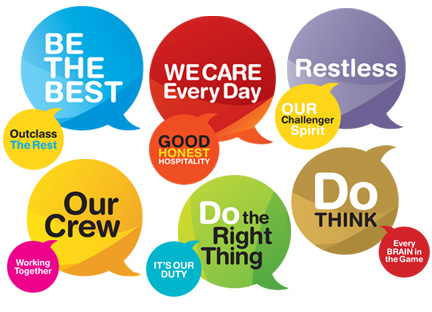Is culture really important?

Every organization has a culture, whether it’s clearly articulated or not. So what exactly is “culture”? Merriam Webster simply defines it as a “way of thinking, behaving, or working that exists in a place or organization.” Defining the culture always comes down to articulating the values and beliefs of the leadership. For example, if family values are a core belief of leadership, the culture will be one that supports a strong work/life balance focus. Or if innovation is important to the leadership, the culture will be one of continuous improvement and leadership in the market. Apple is an obvious example of an innovation culture. So if vision represents what an organization is trying to achieve, culture defines how people are going to behave and what values they are going to embrace while they strive to achieve that vision.
In any organization, it is the responsibility of the senior leadership to define, communicate, and behave in support of the culture. And that culture should become a guiding force in how decisions are made. I once worked for an organization that claimed that their culture was defined as both one that works hard to win, but also does it with uncompromising integrity. However, when I asked people if it would be acceptable if they were able to bring in a significant amount of new business but had to do something a little shady to do it, the responses were inconsistent at best.
We all have an opinion of the type of culture in which we like to operate. But in reality, there is no wrong or right culture. There simply is behavioral alignment with the culture that is chosen. So what are the implications of a misalignment? Well, more people fail because of their inability to reconcile their personal values and beliefs to the culture at their workplace, than because they are unable to perform the job. A lack of alignment of the culture to the vision, mission, and strategy confuses employees over the behaviors that are acceptable and unacceptable.
So what are the keys to establishing a culture that is embraced by all employees?
- Leadership must clearly define the culture in terms of values that drive behavior and decision making.
- Once defined, the vision must be communicated consistently and frequently to all employees.
- The entire employee life-cycle should focus on cultural/value alignment from the recruiting process to the onboarding process to career development and on to reward and recognition. There are three questions that should transcend the entire life cycle: can the person do the job? Do they want to do the job? Do they want to do it HERE? I interviewed at a large global company that spent more time interviewing for cultural alignment than they did for technical competence. That commitment has consistently ranked this company as one of the best places to work by Forbes.
- Since culture defines how people are going to behave it must be aligned with the vision, mission, strategy, and brand promise. These things define what the organization is committed to accomplishing.
- Finally, there must be consequences for violating the culture and values. Reward and recognition systems must be aligned with the behaviors defined by the culture. Conversely, when an employee violates the values and culture, corrective action must be taken. At the company I mentioned above that was committed to its culture, an EVP was actually terminated for violating one of the core values that defined the culture.
A well-defined and communicated culture will attract the kind of people an organization wants to attract, retain those they want to retain, and create an atmosphere of engaged and inspired employees who are able to reconcile their own beliefs and values to those of the company and work collectively to achieve the aligned vision, mission, and strategy.
